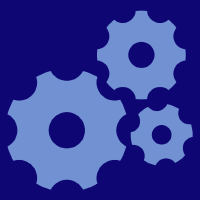Topic Menu
► Topic MenuTopic Editors



Advanced Paradigms, Systems and Enabling Technologies for Product Life Cycle
Topic Information
Dear Colleagues,
In recent years, research and development activities have had huge impacts on advanced manufacturing paradigms, systems and enabling technologies during the whole life-cycle of products, especially in the era of Internet for Industry 4.0/5.0. Topics concerned with keywords like digitalization, intelligentization, and servitization in the context of a networked environment often constitute the focus of both academic and industrial fields. In fact, product life cycle activities are at least dealt with product design, production, usage and maintenance aspects. So it is very important to fuse operational technologies (OTs) with information technologies (ITs) and let them become in reality, from the angle of advanced manufacturing paradigms, architectures, systems, methods, key enabling technologies, case studies, and industrial applications, etc.
On the basis of the reasons mentioned above, this special Topic collection aims to explore a wide range of issues related to the advanced systems and enabling technologies behind product design, production, usage and maintenance under the consideration of different manufacturing paradigms. Potential authors can feel free any involved group journals as the host of their manuscripts. We welcome original research articles, reviews, short communication and technical notes. Research areas include (but are not limited to) the following topics:
- Advanced manufacturing paradigms, architectures, systems, methods, key enabling technologies, case study, and industrial applications, such as smart manufacturing, service-oriented manufacturing, social manufacturing, cloud manufacturing, networked collaborative manufacturing, digital manufacturing, mass customization, etc.
- Advanced product design methods, key enabling technologies, case study, and industrial applications, such as design for X, product service system design, product mass customization design, product platform and modular design, intelligent computing design, generative design, crowdsourcing design, electromechanical system design, materials design, etc.
- Advanced product production methods, key enabling technologies, case study, and industrial applications, such as intelligent factory, production lines, equipment modelling, process technologies and planning, APS/MES/DCS, production process monitoring, quality control, materials processing and logistics, manufacturing performance analysis and optimization, etc.
- Advanced product usage and maintenance methods, key enabling technologies, case study, and industrial applications, such as product fault diagnosis and reliability, product maintenance, remote monitoring and performance prediction of product usages, MRO, product service systems, workflow modelling, etc. (here, the usage and maintenance of products includes activities for both daily life and industrial uses)
- Artificial intelligence in manufacturing including datasets, computing power, models and algorithms such as machine learning, deep learning, generative AI, knowledge graphs, causal inference, large language models, prompt learning, multi-modal models, collective intelligence, swarm intelligence, federated learning, transfer learning, representation learning, few-shot learning, etc.
- Digitalization, collaboration and servitization in manufacturing
- Robotics and robots in manufacturing
- Metaverse and VR/AR in manufacturing
- Other new IT technologies in manufacturing
- Next-generation industrial software and hardware models on industrial Internet
Please note that authors can submit their papers to the special topic collection at any time. Papers will be published online immediately after their acceptance and without delays caused by whether all paper collections are ready.
We look forward to hearing from you.
Prof. Dr. Pingyu Jiang
Prof. Dr. Gang Xiong
Prof. Dr. Jihong Yan
Topic Editors
Keywords
- smart manufacturing
- service-oriented manufacturing
- social manufacturing
- cloud manufacturing
- digital manufacturing
- networked collaborative manufacturing
- product design
- product production
- product usage and maintenance
Participating Journals
| Journal Name | Impact Factor | CiteScore | Launched Year | First Decision (median) | APC |
|---|---|---|---|---|---|

Electronics
|
2.6 | 5.3 | 2012 | 16.4 Days | CHF 2400 |

Journal of Manufacturing and Materials Processing
|
3.3 | 5.1 | 2017 | 16.5 Days | CHF 1800 |

Machines
|
2.1 | 3.0 | 2013 | 15.5 Days | CHF 2400 |

Robotics
|
2.9 | 6.7 | 2012 | 21 Days | CHF 1800 |

Systems
|
2.3 | 2.8 | 2013 | 19.6 Days | CHF 2400 |

MDPI Topics is cooperating with Preprints.org and has built a direct connection between MDPI journals and Preprints.org. Authors are encouraged to enjoy the benefits by posting a preprint at Preprints.org prior to publication:
- Immediately share your ideas ahead of publication and establish your research priority;
- Protect your idea from being stolen with this time-stamped preprint article;
- Enhance the exposure and impact of your research;
- Receive feedback from your peers in advance;
- Have it indexed in Web of Science (Preprint Citation Index), Google Scholar, Crossref, SHARE, PrePubMed, Scilit and Europe PMC.

